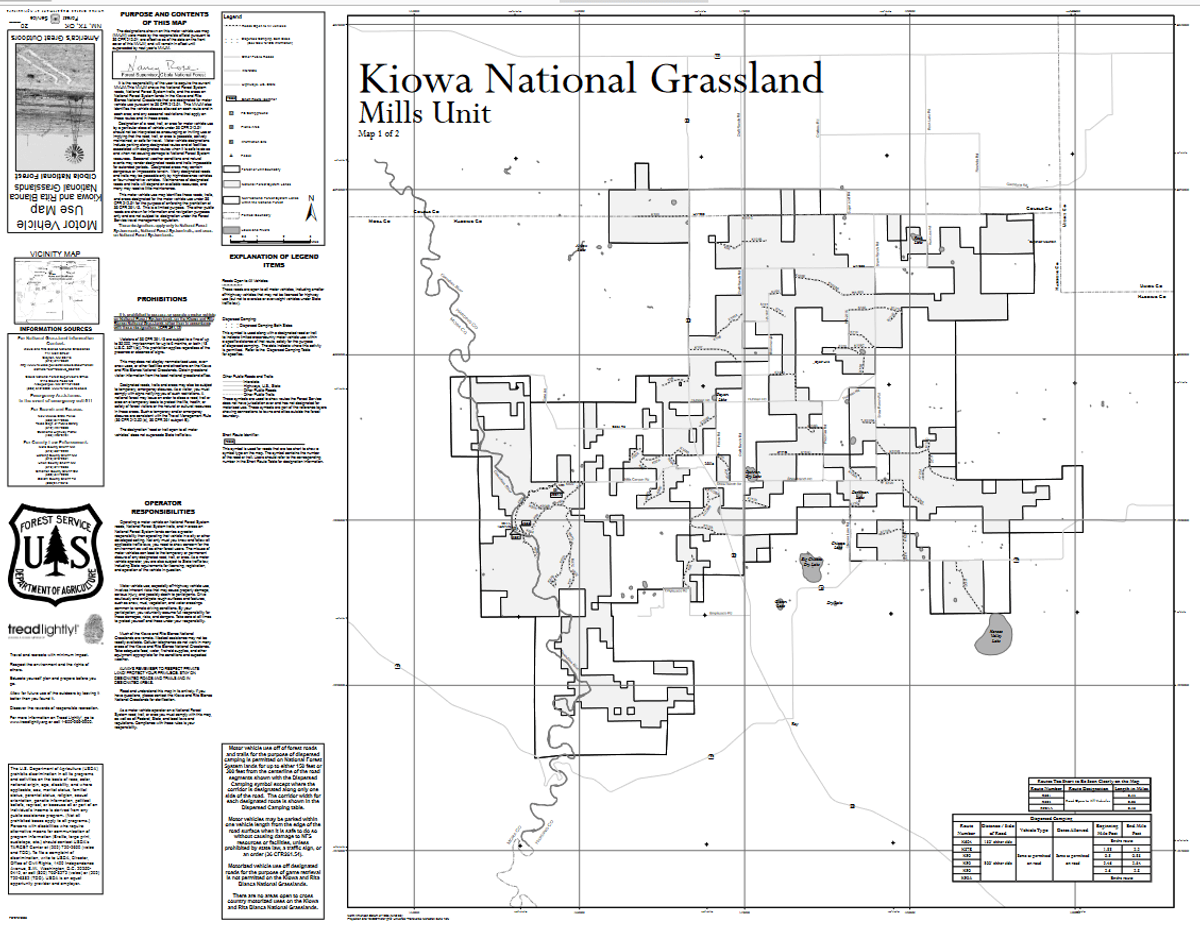Kiowa NG--Mills Canyon
Kiowa NG--Mills Canyon
Cibola National Forest Mills, New Mexico 87730
Official WebsiteKiowa National Grasslands Official Website
Kiowa National Grassland map
About this Location
As you approach Mills Canyon from the east, you drive through High Plains' short grass prairie. Blue grama (Bouteloua gracilis), buffalo grass (Buchloe dactyloides), galleta (Pleuraphis jamesii), sideoats grama (Bouteloua curtipendula), and little bluestem (Schizachyrium scoparium) dominate the vegetation, with only scattered trees and shrubs. This is excellent habitat for pronghorn antelope and you are likely to see several herds.
The terrain and vegetation change drastically when you approach the edge of Mills Canyon, which descends almost 1,000 feet to the Canadian River below. Ponderosa pine (Pinus ponderosa), pinyon pine (P. edulis), Gambel oak (Quercus gambelii), and junipers (Juniperus monosperma and J. scopulorum)add interest to the canyon’s sandstone boulders and cliffs.
With the right rainfall patterns in mid to late summer, there can be spectacular sunflower (Helianthus annuus and H. petiolaris) displays. Otherwise, do not expect showy wildflower displays; you will have to be content just finding interesting plants here and there. But, the diversity is good with 493 species and varieties being identified in 73 families during surveys (PDF) done in the early 1980s. Bush morning-glory (Ipomoea leptophylla), desert four o’clock (Mirabilis multiflora), and oak-leaved thornapple (Datura quercifolia) are some of the showy plants you are likely to find in the sandy soils of the river floodplain.
Mills Canyon has an interesting cultural history. Melvin Mills planted orchards with over 14,000 trees in the late 1800s. A few pear, apple, apricot, mulberry, walnut, pecan, plum, and Osage orange trees still persist.
July through September are the best months to visit for wildflower viewing. Daytime temperatures during these months can exceed 100 degrees, but at an elevation of 5,000-6,000 feet, the mornings and evenings are usually pleasant.
About Kiowa National Grasslands
See all hotspots at Kiowa National Grasslands
Within the short grass prairie of the southern Great Plains lie the Kiowa and Rita Blanca National Grasslands. These grasslands encompass approximately 230,000 acres in six counties within New Mexico, Texas, and Oklahoma. These administrative units are not solid blocks of Government-owned land; rather they consist of numerous small Government parcels, intermingled with privately owned tracts. Prior to settlement, this area was home to many American Indian tribes. The abundance of buffalo and wildlife provides strong testimony to the importance of the grass resource.
With the Homestead Act of 1862, settlers began to pour into the prairie. They were lured by the promise of a better life and cheap and productive farmland.
The settlers quickly discovered the unpredictability of prairie life. While the grasslands were productive in wet years, they were also subject to serious drought and harsh winters. The farm price collapse in 1919-20, coupled with severe drought, the depression, and the ensuing “dust bowl”, pushed many homesteaders to the edge of survival.
In the 1930s and early 1940s, programs were initiated which allowed the Federal Government to purchase and restore damaged lands. These purchased lands were known as Land Utilization Projects and were administered by the Soil Conservation Service. By 1960, the administration of these Land Utilization Projects was transferred to the Forest Service, and they were then designated as National Grasslands.
Content from Official Website and Kiowa National Grasslands Official Website
Last updated May 10, 2023
